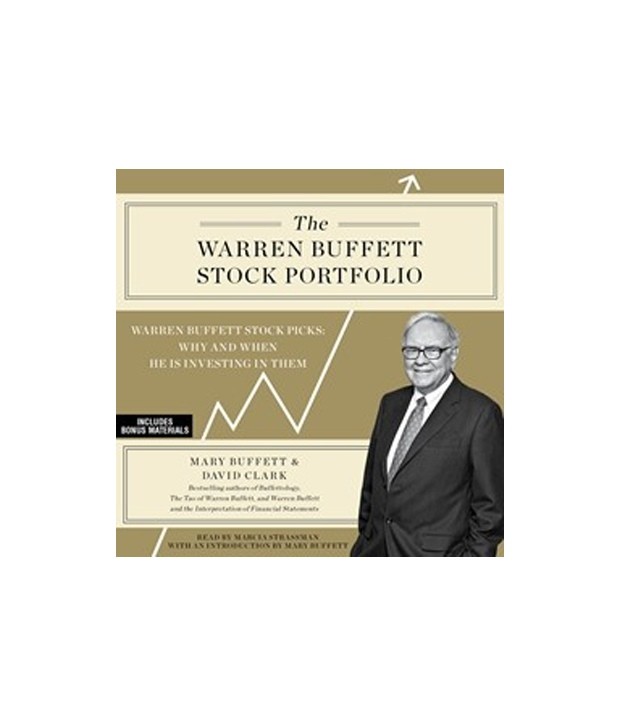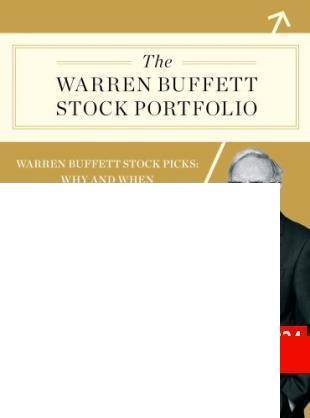The Warren Buffett Stock Portfolio
Post on: 12 Сентябрь, 2015 No Comment

INTRODUCTION
In these very turbulent times we think it is best to start with a quote from Warren Buffett during the 1990–1991 recession:
Nevertheless, fears of a California real estate disaster similar to that experienced in New England caused the price of Wells Fargo stock to fall almost 50% within a few months during 1990. Even though we had bought some shares at the prices prevailing before the fall, we welcomed the decline because it allowed us to pick up many more shares at the new panic prices.
Investors who expect to be ongoing buyers of investments throughout their lifetimes should adopt a similar attitude toward market fluctuations; instead many illogically become euphoric when stock prices rise and unhappy when they fall.
Warren has always maintained that the time to buy stocks is when nobody else wants them. In the recession of 2008–2009 we had that opportunity, and for those of us who did venture into that abyss, the rewards were tremendous. As we look toward the end of 2011 and the beginning of 2012, we are once again seeing stock prices at price-to-earnings-ratios that we haven’t seen since the early eighties. Coca-Cola is trading at 16 times earnings; in 1999 it was trading at 47 times earnings. The powerhouse Wal-Mart is trading at a P/E of 12; in 2001 it was trading at a P/E of 38. Procter & Gamble is selling at a P/E of 16; in 2000 it was trading at a of P/E 29. What does this mean?
As we enter the fifth year of what many economists are calling the Great Recession, we are finding that some of the most amazing businesses—those with fantastic long-term economics working in their favor—are trading at prices and price-to-earnings ratios that offer investors real opportunities for increasing their wealth. We aren’t talking about opportunities for quick profit. We are talking about serious long-term moneymaking with ten-year compounding annual rates of return conservatively in the 8%–12% range. That is what the market is now offering us. Pessimism about the banking situation in Europe and the unemployment in the United States have created the perfect storm to bring stock prices down and offer value-oriented investors some great opportunities.
In our book Warren Buffett and the Interpretation of Financial Statements we focused on examining a company’s financial statements to discover whether or not it has what Warren calls a “durable competitive advantage,” which shows us if a company has great long-term economics working in its favor. In this book, we are looking only at companies that Warren has already identified as having a durable competitive advantage. These are the companies that he has bought for himself and for his holding company, Berkshire Hathaway, as long-term investments. Because of the recession, these companies are once again selling at prices that offer great long-term growth prospects.
Our primary concern is with teaching you how to value companies so you can create a conservative projection as to the kind of future return that an investment offers at its current market price. In Warren’s world, as stock prices decrease, the prospects for the investment increase. Putting a number on those prospects tells us whether or not the stock is an attractive buy.
We start with a brief history of Warren’s investment strategy and then explain how to interpret a company’s per share earnings and per share book value histories. This allows us to quickly identify a company with a durable competitive advantage and to project the compounding annual rate of return the investment offers. We then look closely at seventeen investments in Warren’s current stock portfolio, working up a case study and valuation for each company. We also take a quick look at the investments made by Berkshire’s other three investment managers.

Historically, we have reason to believe that our projections ten years out are accurate under normal business conditions. Throughout this book, we have kept the projections conservative.
When you are done with this book you should be able to quickly determine whether a company has a durable competitive advantage and whether or not the company’s stock is attractively priced.
Presently there are four people at Berkshire Hathaway who are “picking stocks” for Berkshire’s portfolio. On top is Warren Buffett, who makes 99% of the investment decisions for Berkshire. Then there is Charlie Munger, who often discusses investments with Warren and whose enthusiasm has put Berkshire into a few out-of-the-box investments. There are also newcomers Todd Combs, whom Warren hired in 2010 to help him pick stocks for Berkshire, and Ted Weschler, who will officially join Berkshire in early 2012 as a portfolio manager. The major portion of this book is concerned only with the companies that Warren Buffett has invested in personally and/or made the decision for Berkshire to invest in. At the end of the book, for those who are curious, we take a brief look at Charlie Munger’s, Todd Combs’s, and Ted Weschler’s respective investment styles and the contributions they have made to Berkshire’s portfolio.
So, without any more delay, let’s begin our exploration into Warren Buffett’s Stock Portfolio.
MARY BUFFETT & DAVID CLARK














